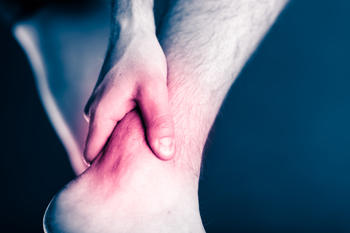
An Achilles tendon tear, whether partial or complete, is a serious injury often caused by sudden, forceful movements during sports or activities. Symptoms of an Achilles tendon tear include sharp pain, swelling, bruising, and difficulty pointing the foot or standing on tiptoe. Treatment options vary depending on the severity of the tear. Partial tears can often be managed conservatively with immobilization using a cast, splint, brace, or walking boot. This is followed by a structured rehabilitation program to restore strength and flexibility gradually. Complete tears typically require surgical intervention to reattach the tendon ends and ensure optimal healing. Following surgery, a thorough rehabilitation plan is essential to regain full function and reduce the risk of re-injury. If you suspect an Achilles tendon tear or experience symptoms like sudden pain and restricted movement, it is suggested that you seek an appointment with a podiatrist for a full exam and tailored treatment plan.
Achilles tendon injuries need immediate attention to avoid future complications. If you have any concerns, contact one of our podiatrists of Jill Einhorn, DPM and James Einhorn, DPM. Our doctors can provide the care you need to keep you pain-free and on your feet.
What Is the Achilles Tendon?
The Achilles tendon is a tendon that connects the lower leg muscles and calf to the heel of the foot. It is the strongest tendon in the human body and is essential for making movement possible. Because this tendon is such an integral part of the body, any injuries to it can create immense difficulties and should immediately be presented to a doctor.
What Are the Symptoms of an Achilles Tendon Injury?
There are various types of injuries that can affect the Achilles tendon. The two most common injuries are Achilles tendinitis and ruptures of the tendon.
Achilles Tendinitis Symptoms
Rupture Symptoms
Treatment and Prevention
Achilles tendon injuries are diagnosed by a thorough physical evaluation, which can include an MRI. Treatment involves rest, physical therapy, and in some cases, surgery. However, various preventative measures can be taken to avoid these injuries, such as:
If you have any questions please feel free to contact our offices located in Brooklyn and Astoria, NY . We offer the newest diagnostic tools and technology to treat your foot and ankle needs.